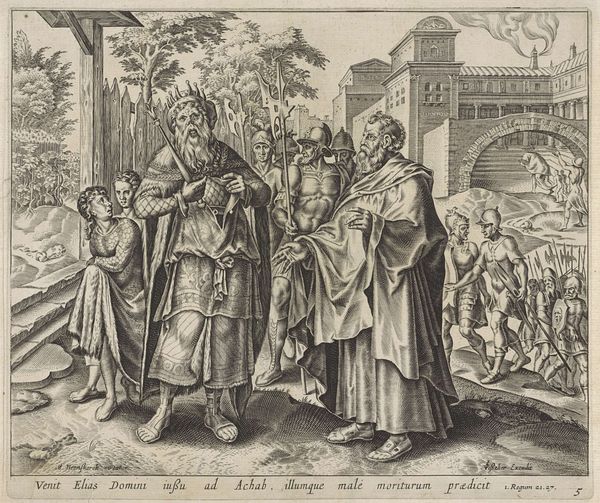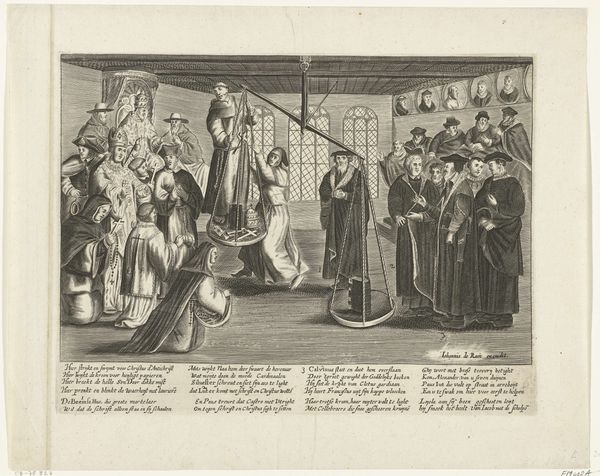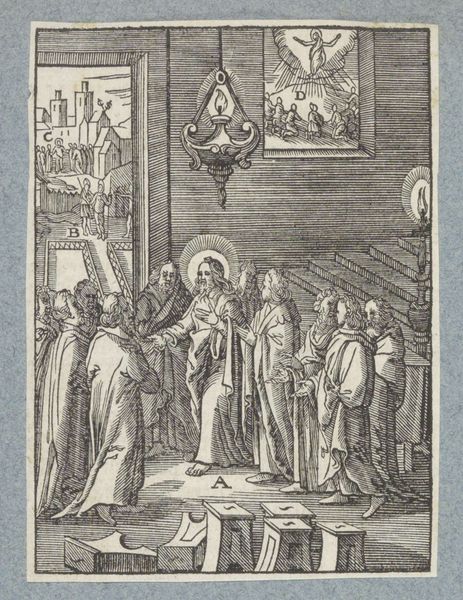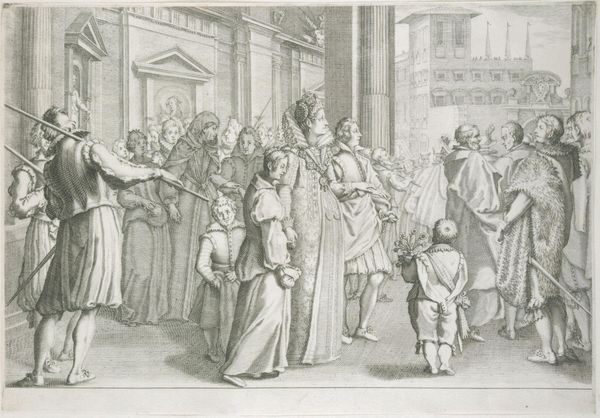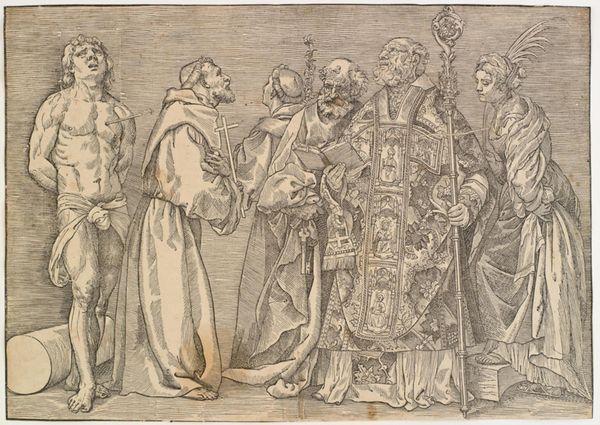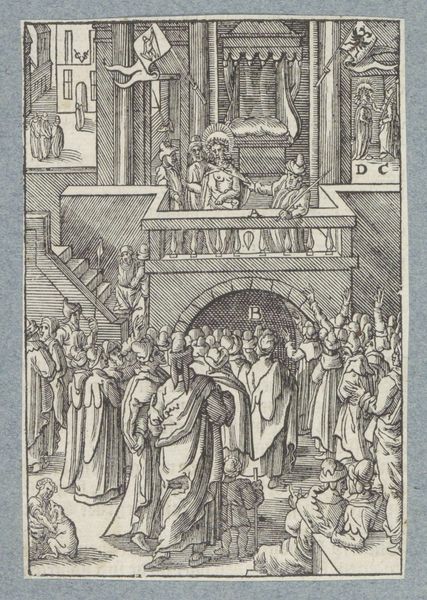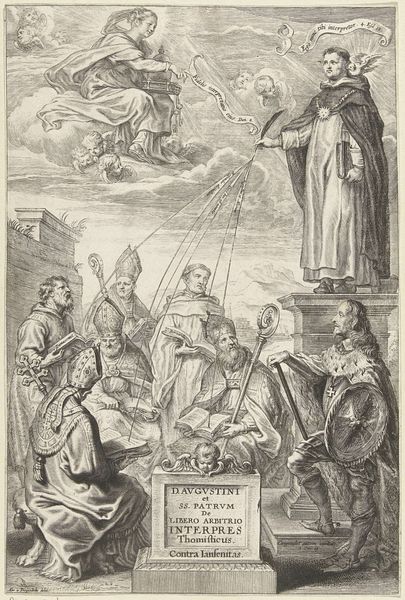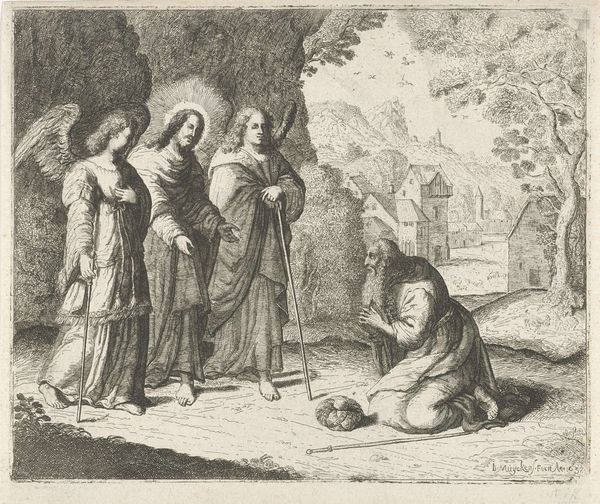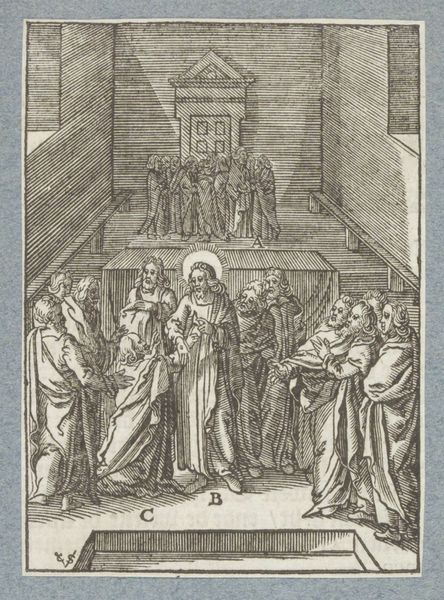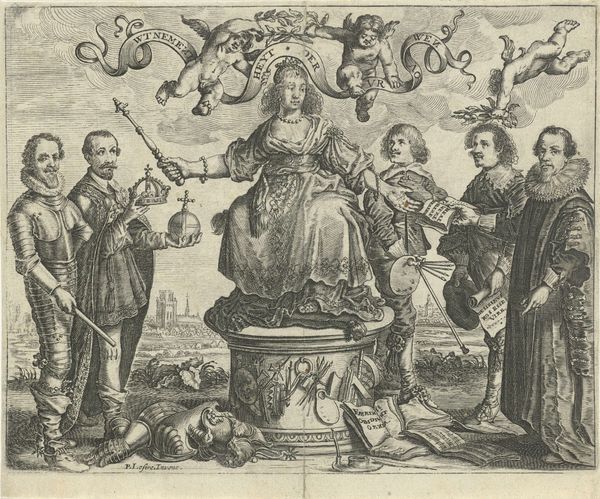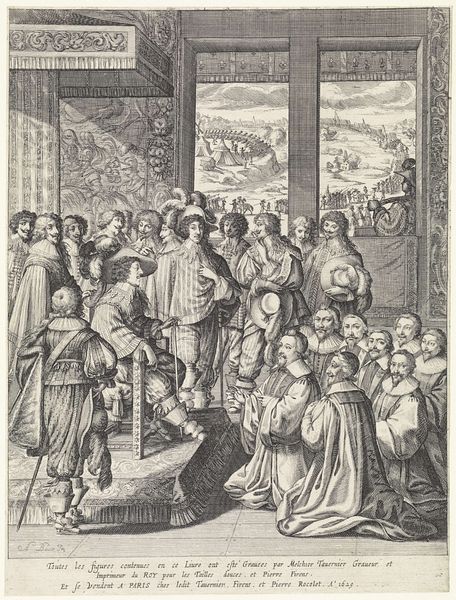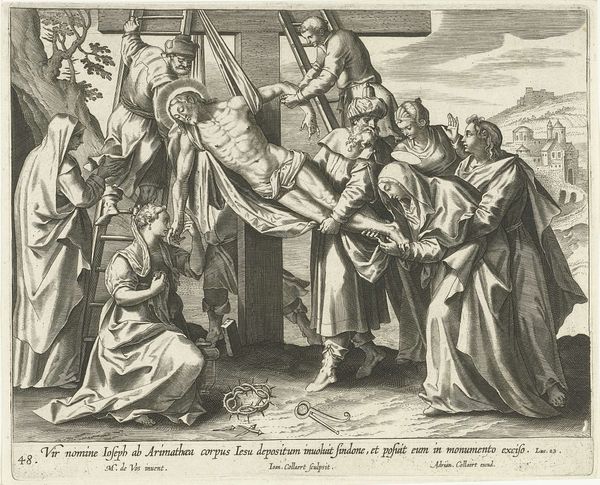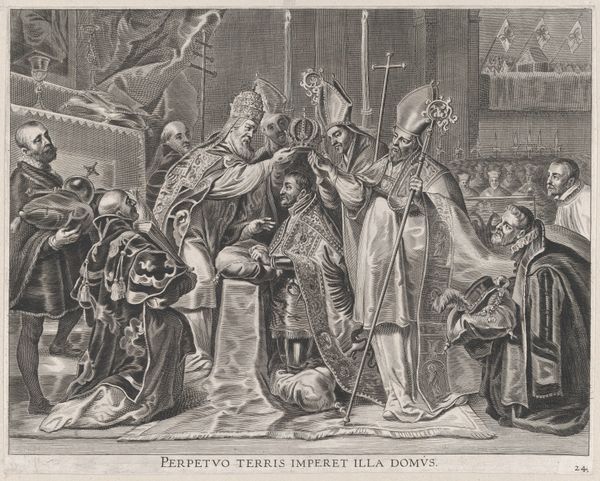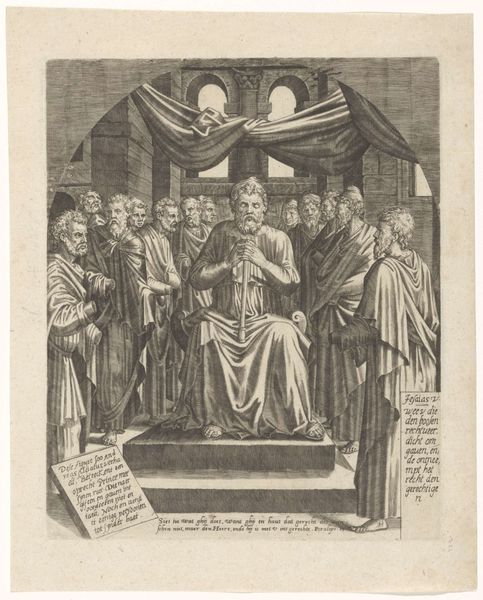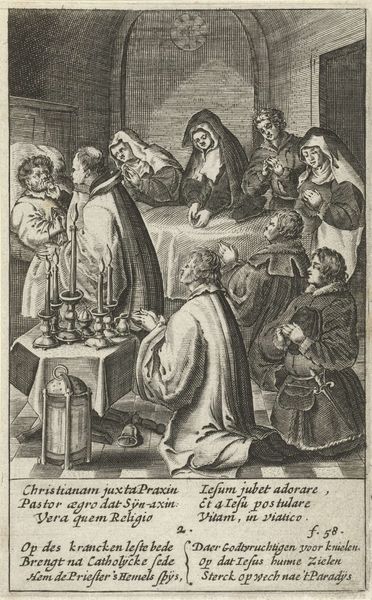
Memorietafel van heer Raas van Haamstede, gedood tijdens de slag bij Brouwershaven, 1426 1783
0:00
0:00
Dimensions: height 470 mm, width 640 mm
Copyright: Rijks Museum: Open Domain
Curator: This is a rather intriguing print from 1783 by Dirk Verrijk, titled "Memorietafel van heer Raas van Haamstede, gedood tijdens de slag bij Brouwershaven, 1426"—Memory Table of Raas van Haamstede, killed during the battle of Brouwershaven. What are your initial thoughts? Editor: The somber tonality is immediately striking, creating an atmosphere of profound reverence. The careful composition is like a stage setting, yet something seems amiss in the figures' expressions... an almost caricatured quality in the depiction of the subjects. Curator: Interesting. If we consider this engraving as a tableau vivant, or a staged historical reconstruction, those somewhat stiff poses read quite differently. Observe the central figure of Christ holding what seems to be a book, while a crowned woman, perhaps Mary, offers Him crowns – symbols of earthly power surrendered to divine authority. This interplay of the terrestrial and the celestial creates a visually compelling semiotic. Editor: Yes, but note the scale of the figures—the central, presumably divine figures dominate the scene, dwarfing the earthly supplicants, which are clearly segregated to either side. We see visual cues of status – armour for the men, and elaborate headwear for the women; but even these markers of earthly distinction pale in comparison to Christ’s serene verticality, or the Virgin’s quiet but definite power, expressed by her downward, graceful, gesture. Curator: Precisely! The formal arrangement reinforces a very specific message of hierarchy and sacrifice. And of power expressed in visual form. Notice also the shields, these crests serve as identity markers that anchor this commemoration to a very specific lineage and history. We can extrapolate about Raas van Haamstede from those too! Editor: Which makes one wonder, who was Raas van Haamstede to warrant such an elaborate memorial, so many centuries after his death? This feels as much a testament to family pride and social standing as it is a genuine act of mourning. Or, is the point not the death, but the piety of his descendants? Curator: Possibly both, as this piece operates on multiple symbolic registers simultaneously. On one level it documents, while it elevates, which adds even greater significance to each object presented here: the shields, the crowns, and Christ holding the book. All coalesce in this formal representation that suggests a complex family history. Editor: An intersection of mortality, legacy, and the enduring potency of symbols. I find this intricate dance of the sacred and secular to be endlessly fascinating. Curator: Indeed, it prompts a renewed awareness of the artist's conscious manipulation of symbolic language, prompting a deeper understanding of art's persuasive possibilities.
Comments
No comments
Be the first to comment and join the conversation on the ultimate creative platform.
